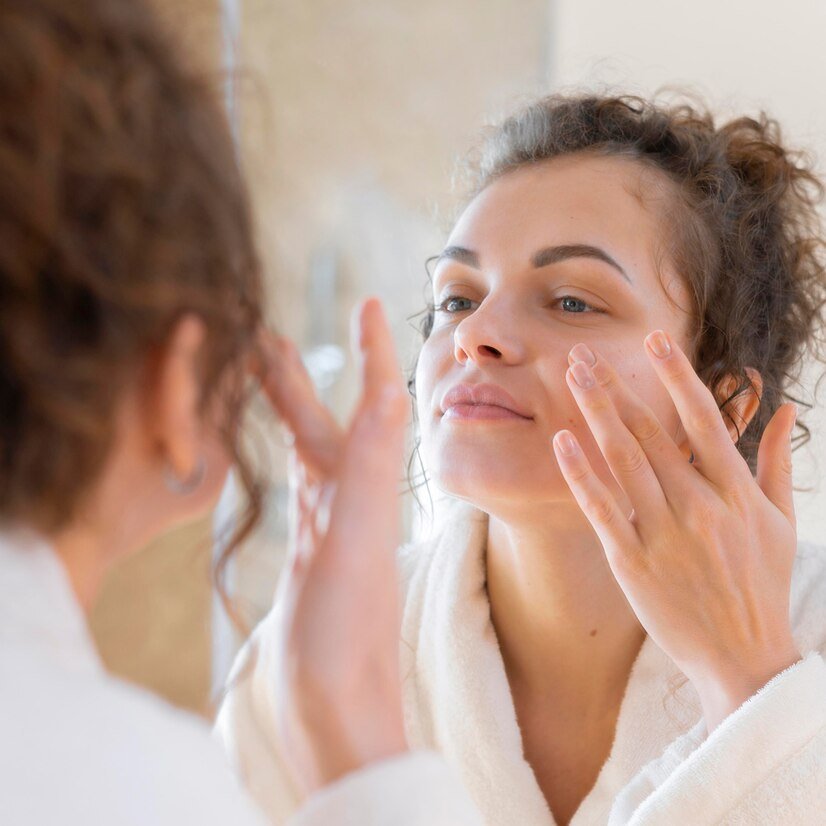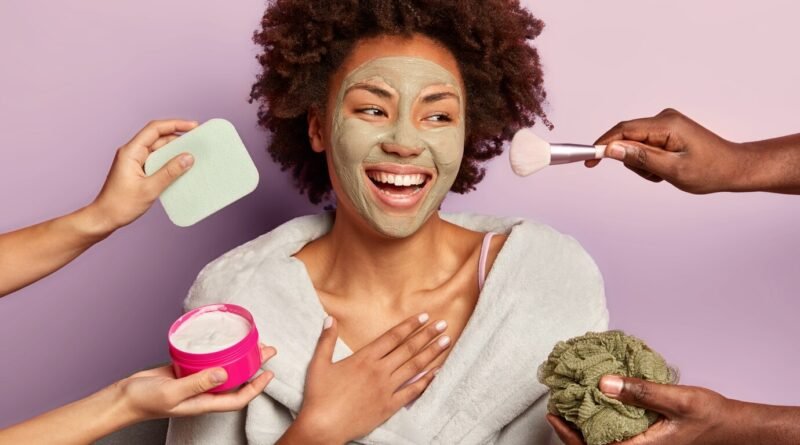Skin Cycling Simplified: Your Essential Guide to Radiant Skin
Introduction to Skin Cycling
Skin Cycling Simplified: Your Essential Guide to Radiant Skin

Welcome to the world of skin cycling, a game-changing approach to skincare that has been gaining immense popularity. But what exactly is skin cycling? At its core, it’s a structured skincare routine, typically spread over four nights, each with a specific focus: exfoliation, retinoid treatment, recovery, and then a night off. This cycle is designed to maximize the benefits of each product while minimizing irritation and stress on your skin.
Why is skin cycling important? Our skin, the body’s largest organ, needs balanced care. Overloading it with multiple active ingredients daily can lead to irritation and weakened skin barriers. Skin cycling introduces a more mindful approach, allowing your skin to reap the benefits of powerful ingredients while also providing ample time for rest and recovery.
Whether you’re a skincare enthusiast or new to the world of beauty routines, this guide will walk you through everything you need to know about skin cycling. From identifying your skin type to choosing the right products, we’ve got you covered. Let’s embark on this journey to healthier, radiant skin together!
Understanding Your Skin Type

Knowing your skin type is the cornerstone of any effective skincare routine, especially when it comes to skin cycling. Your skin can be broadly classified into one of four types: normal, oily, dry, or combination. Each type has its unique needs and responds differently to skincare products.
- Normal Skin: This type is neither too oily nor too dry. It’s all about maintaining balance.
- Oily Skin: Characterized by excess sebum production, it often requires products that regulate oil and prevent breakouts.
- Dry Skin: Often feels tight and may have flaky areas, needing more nourishing and hydrating products.
- Combination Skin: A mix of oily and dry areas, typically oily in the T-zone and dry on the cheeks.
Understanding your skin type helps in choosing products that align with your skin’s needs, especially crucial when selecting exfoliants, retinoids, and recovery products for skin cycling.
The Four-Night Skin Cycling Routine Explained
The essence of skin cycling lies in its structured, four-night routine. Here’s a breakdown of what each night involves:
- Exfoliation Night: This is all about removing dead skin cells and unclogging pores. Exfoliating helps in rejuvenating your skin, making it look brighter and smoother. Choose an exfoliant that suits your skin type—gentle acids like glycolic or lactic acid for normal to dry skin, and salicylic acid for oily or acne-prone skin.
- Retinoid Night: Retinoids, derivatives of Vitamin A, are powerhouse ingredients known for their anti-aging and skin-clearing properties. They help in promoting cell turnover and improving skin texture. Start with a lower concentration if you’re new to retinoids and always apply on dry skin to avoid irritation.
- Recovery Night: This night is all about hydration and repair. Use soothing and hydrating products like hyaluronic acid serums, ceramide-enriched moisturizers, and nourishing face oils. It’s a time for your skin to rest and rejuvenate.
- Repeat: After the recovery night, you take a break, letting your skin rest with just basic cleansing and moisturizing.
Each step is vital in ensuring your skin gets the care it needs without overdoing it. By cycling through these stages, your skin can effectively absorb and benefit from each product, leading to healthier and more radiant skin.
Choosing the Right Products for Exfoliation Night
Exfoliation is a crucial step in skin cycling. It’s essential to choose the right product based on your skin type:
- For Normal Skin: Gentle exfoliants like glycolic acid are ideal.
- For Oily Skin: Salicylic acid is beneficial as it penetrates deeply into oily pores.
- For Dry Skin: Lactic acid is a great option, as it exfoliates and hydrates simultaneously.
- For Combination Skin: A balanced approach with a product containing both glycolic and salicylic acids works well.
Product Recommendations:
- Glycolic Acid Exfoliant (for normal skin): [Brand Name] Gentle Exfoliating Toner.
- Salicylic Acid Exfoliant (for oily skin): [Brand Name] Deep Cleanse Exfoliating Solution.
- Lactic Acid Exfoliant (for dry skin): [Brand Name] Hydrating Exfoliator.
- Combination Formula (for combination skin): [Brand Name] Dual Action Exfoliating Serum.
Remember, over-exfoliation can lead to skin irritation, so it’s crucial to follow the recommended usage and listen to your skin’s needs.
Retinoid Night: Understanding and Choosing Retinoids
Retinoid night is a pivotal part of the skin cycling routine, focusing on cell renewal and tackling signs of aging. Retinoids, derivatives of Vitamin A, come in various forms and strengths, making them versatile for different skin types.
- Sensitive Skin: Start with a low-strength retinoid or retinol, which is gentler and less likely to cause irritation.
- Normal to Oily Skin: You can opt for a medium-strength retinoid, which offers more significant benefits in terms of texture improvement and acne control.
- Mature or Sun-damaged Skin: Higher strength retinoids are beneficial, but it’s essential to acclimate your skin gradually to avoid irritation.
Product Recommendations:
- Low-Strength Retinol (for sensitive skin): [Brand Name] Gentle Renewal Serum.
- Medium-Strength Retinoid (for normal to oily skin): [Brand Name] Advanced Retinoid Complex.
- High-Strength Retinoid (for mature or sun-damaged skin): [Brand Name] Intense Repair Retinol Treatment.
It’s crucial to apply retinoids on dry skin and follow up with a moisturizer to minimize potential irritation. Always remember to use sunscreen during the day, as retinoids can increase your skin’s sensitivity to the sun.
Recovery Night: Soothing and Restoring Your Skin

After the active treatments of exfoliation and retinoids, recovery night is all about nurturing and soothing your skin. This step is vital for maintaining a healthy skin barrier and preventing irritation.
- Use gentle, hydrating cleansers and avoid any harsh ingredients.
- Hydrating serums, especially those containing hyaluronic acid, provide deep hydration without feeling heavy.
- Nourishing moisturizers, ideally with ceramides or peptides, help to repair and strengthen the skin barrier.
- Face oils rich in antioxidants can provide an extra boost of nourishment and protection.
Product Recommendations:
- Hydrating Serum: [Brand Name] Deep Hydration Serum.
- Nourishing Moisturizer: [Brand Name] Barrier Repair Cream.
- Antioxidant Face Oil: [Brand Name] Rejuvenating Facial Oil.
Remember, recovery night is about giving your skin a break and allowing it to recuperate, ensuring it’s ready for the next cycle of treatments.
Repeat and Maintenance: Keeping Your Skin Healthy
After the recovery night, it’s time to let your skin breathe and rest. This is the “Repeat” phase, where you go back to basics with gentle cleansing and moisturizing. This phase is crucial as it gives your skin a much-needed break from active ingredients, allowing it to maintain its natural balance and health.
- Stick to a gentle, non-stripping cleanser to keep your skin clean without over-drying.
- Use a simple, hydrating moisturizer to keep your skin’s hydration levels optimal.
- It’s also a great time to assess how your skin is responding to the skin cycling routine and make any necessary adjustments.
In terms of maintenance, a few lifestyle factors can significantly impact your skin’s health:
- Stay hydrated by drinking plenty of water throughout the day.
- Eat a balanced diet rich in antioxidants, vitamins, and minerals.
- Ensure you get enough sleep, as it’s crucial for skin repair and regeneration.
- Protect your skin from the sun with a broad-spectrum SPF every day.
These simple yet effective habits can make a significant difference in the health and appearance of your skin, complementing your skin cycling routine.
Common Mistakes to Avoid in Skin Cycling
While skin cycling is a relatively straightforward process, there are some common pitfalls to avoid:
- Over-Exfoliation: This can lead to irritation and a compromised skin barrier. Stick to the recommended frequency.
- Using Too Many Active Ingredients: Incorporating too many active ingredients into your routine can overwhelm your skin. Skin cycling is about simplification and effectiveness.
- Not Giving Products Enough Time to Work: Patience is key in skincare. Give each cycle time to show results before making changes.
- Skipping Sun Protection: Retinoids can make your skin more sensitive to the sun. Never skip your daily SPF.
Avoiding these mistakes will ensure you get the most out of your skin cycling routine, leading to healthier, more radiant skin.
FAQs on Skin Cycling

Frequently Asked Questions About Skin Cycling
Skin cycling, while straightforward, often brings up several questions. Here are answers to some of the most common queries:
- How Long Does It Take to See Results from Skin Cycling?
- It varies, but typically, you might start noticing improvements in your skin’s texture and appearance within a few weeks. Consistency is key.
- Can I Use Skin Cycling if I Have Sensitive Skin?
- Yes, but you may need to adjust the frequency of exfoliation and retinoid nights. Always listen to your skin and consult with a dermatologist if unsure.
- Is Skin Cycling Suitable for All Ages?
- Absolutely! Skin cycling can be adapted to suit various skin types and ages, focusing on what your skin needs at different stages of life.
- What If I Experience Irritation?
- Scale back on the active nights or switch to gentler products. Remember, skin cycling is flexible and should be adjusted to your comfort level.
- Can I Incorporate Other Skincare Treatments with Skin Cycling?
- It’s best to keep it simple and not overload your skin. If you wish to include other treatments, consult a skincare professional for personalized advice.
Conclusion and Final Thoughts
As we wrap up this comprehensive guide to skin cycling, remember that the key to success lies in understanding and listening to your skin. Skin cycling is more than just a routine; it’s a mindful approach to skincare that emphasizes balance, effectiveness, and care.
Whether you’re a seasoned skincare enthusiast or just starting your journey, skin cycling offers a structured yet flexible way to achieve healthier, more radiant skin. Embrace the process, be patient with the results, and most importantly, enjoy the journey to discovering your skin’s fullest potential.
We hope this guide has provided you with valuable insights and practical tips to embark on your skin cycling journey. Here’s to vibrant, healthy skin!

